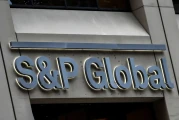The tickers glowed green across every screen in the world on Monday. The S&...
S&P 500 Futures Slide: What the Latest Earnings Reports Are Signaling
The market is hitting all-time highs, but the celebration feels hollow. Here’s why the foundation is cracking.
*
At first glance, the ticker tape tells a story of unbridled success. The S&P 500 just marked its 36th record close of the year. The Dow Jones Industrial Average is right there with it, also charting new territory. Stock Market Today: Dow, S&P 500 Records; Nasdaq Rises; Qorvo, Wayfair, Nvidia, Tesla and More Movers. The tech-heavy Nasdaq has notched 35 record closes of its own, the most since the frothy days of 2021. On paper, this is the picture of a robust, confident bull market.
But if you look past the headline indices, the picture warps. The story behind the numbers isn't one of broad-based strength, but of extreme, precarious concentration. It’s a market that has become so top-heavy, so dependent on a handful of leviathan tech stocks, that the very definition of a "record high" has become misleading. The celebration on Wall Street feels less like a party and more like a carefully staged performance, with everyone hoping the set doesn't collapse before the final act.
This isn’t just a feeling; it’s a statistical fact. On a recent day when the S&P 500 ground out a 0.2% gain to close at a new peak, a startling detail emerged: nearly 70% of the stocks within the index actually finished the day with losses. Let that sink in. The broad market was overwhelmingly negative, yet the index designed to represent it went up. This isn't a minor discrepancy. It's a structural fissure, a glaring warning that the market’s health is an illusion propped up by a few untouchable names.
The Anatomy of a Concentrated Market
What we’re witnessing is the logical endpoint of the "Magnificent Seven" narrative. The rally is being driven almost exclusively by a tiny cohort of tech megacaps. While hundreds of companies in the S&P 500 tread water or sink, the information technology sector rose about 2%—to be more exact, 1.98%—single-handedly dragging the entire index into positive territory. The Roundhill Magnificent Seven ETF, a fund that encapsulates these giants, continues to climb, creating a powerful gravitational pull that distorts the rest of the market.
This is the financial equivalent of building a skyscraper on just a few colossal pillars while the rest of the foundation is made of plywood. The building might reach a record height, but is it stable? The scale of this concentration is staggering. Microsoft has now officially joined Nvidia in the exclusive $4 trillion market cap club, with Apple tapping on the door during intraday trading. Meanwhile, Nvidia itself, the undisputed king of the AI boom, has soared past $4.8 trillion in value (a valuation that now comfortably exceeds the annual GDP of Germany). These companies are no longer just stocks; they are economic forces unto themselves, with balance sheets that rival small nations.

And this is the part of the analysis that I find genuinely concerning. I've analyzed market breadth data for over a decade, and while narrow leadership isn't a new phenomenon, the sheer magnitude of this divergence is. The gap between the performance of the top 10 stocks and the other 490 in the S&P 500 is widening to a degree that strains historical comparison. How can we call this a healthy market when the vast majority of its participants are being left behind? At what point does a market index cease to be a reliable barometer of the economy and instead become a tracker for a handful of tech monopolies?
This entire structure is predicated on the assumption that these few giants are infallible. Their continued outperformance is no longer a pleasant bonus for investors; it’s a structural necessity for the stability of the entire market. That’s a fragile bet, and it’s about to be tested by two powerful headwinds.
The Double Disappointment Scenario
The market’s narrow ascent faces an imminent two-front challenge: a tight-lipped Federal Reserve and a high-stakes earnings season. First, the Fed. While the central bank delivered another quarter-point rate cut, Fed Chair Jerome Powell was quick to pour cold water on hopes for more stimulus, stating that a December cut is "far from a foregone conclusion." Stock market today: Nasdaq clinches record, Dow, S&P 500 dip as Fed cuts rates, Powell downplays December cut. He spoke of navigating an economic "fog," a clear signal of uncertainty that the market, addicted to forward guidance, does not like to hear.
The divisions within the Fed itself are also on full display. One governor argued for a more aggressive half-point cut, while another dissented in favor of holding rates steady. This lack of consensus only adds to the fog. The era of predictable, coordinated central bank support appears to be over. Without the tailwind of guaranteed cheap money, can these tech valuations continue their vertical climb?
The second, and more immediate, test is earnings. The enthusiasm for Big Tech will be put under the microscope this week as Microsoft, Meta, and Alphabet are all set to report their quarterly results. For these stocks, merely meeting expectations won't be enough. At these nosebleed valuations, they need to deliver flawless reports and issue spectacular forward guidance to justify their price tags. Any hint of a slowdown, any sign of weakness in cloud spending or digital advertising, could be the catalyst that finally makes investors question the sustainability of this rally.
The risk here is a cascade failure. If one of these pillars shows a crack, it won’t just affect that single stock. It will force a repricing of risk across the entire concentrated ecosystem. Given that these few names are responsible for the lion's share of the market's gains, a stumble from one or two of them could trigger an outsized negative reaction in the broader indices, revealing the weakness that has been masked for months.
This Isn't Strength; It's Leverage
Let’s be precise about what we’re seeing. This isn’t a bull market in the traditional sense, where a rising tide lifts all boats. This is a hyper-leveraged bet on a handful of companies. The record highs are a mathematical artifact of market-cap weighting, not a reflection of widespread economic health or investor confidence. The S&P 500 is supposed to be a diversified index, but its recent behavior is more akin to a poorly diversified, high-risk tech fund. The headline number is lying to you. It speaks of strength, but the underlying data screams fragility. And in any system, from engineering to finance, top-heavy structures are always the first to topple.
Tags: s& p 500 futures

